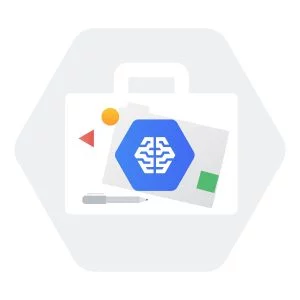
In this complete deep reinforcement learning course you will learn a repeatable framework for reading and implementing deep reinforcement learning research papers. You will read the original papers that introduced the Deep Q learning, Double Deep Q learning, and Dueling Deep Q learning algorithms. You will then learn how to implement these in pythonic and concise PyTorch code, that can be extended to include any future deep Q learning algorithms. These algorithms will be used to solve a variety of environments from the Open AI gym’s Atari library, including Pong, Breakout, and Bankheist.
You will learn the key to making these Deep Q Learning algorithms work, which is how to modify the Open AI Gym’s Atari library to meet the specifications of the original Deep Q Learning papers. You will learn how to:
Repeat actions to reduce computational overhead
Rescale the Atari screen images to increase efficiency
Stack frames to give the Deep Q agent a sense of motion
Evaluate the Deep Q agent’s performance with random no–ops to deal with model over training
Clip rewards to enable the Deep Q learning agent to generalize across Atari games with different score scales
If you do not have prior experience in reinforcement or deep reinforcement learning, that’s no problem. Included in the course is a complete and concise course on the fundamentals of reinforcement learning. The introductory course in reinforcement learning will be taught in the context of solving the Frozen Lake environment from the Open AI Gym.
Instructor Details
Courses : 1
Specification: Modern Reinforcement Learning: Deep Q Learning in PyTorch
|
23 reviews for Modern Reinforcement Learning: Deep Q Learning in PyTorch
Add a review Cancel reply
This site uses Akismet to reduce spam. Learn how your comment data is processed.

| Price | $17.99 |
|---|---|
| Provider | |
| Duration | 5.5 hours |
| Year | 2020 |
| Level | Intermediate |
| Language | English |
| Certificate | Yes |
| Quizzes | No |

$99.99 $17.99






Fredrik Omstedt –
I took this course as preparation for writing my Master’s thesis. I think it was very good in that it dealt with understanding papers, something I definitely will have to do for my thesis. It also gave me a lot of insight on how to tackle a bunch of problems that might arise when doing my own implementations.
Wong Yuh Sheng Reuben –
Phil is an amazing teacher and explains his code, and the ideas behind the implementation well.
Charlotte Dejonckheere –
very clear
Peter Blonner –
Very clear explanations and course mix of theory and practice suits my learning style
Alexandru Jeman –
It is pretty good and straight to the point, above expectation if your are comparing to everything you see around. Code, classes and parameters are well explained, will save you weeks or months of learning.
Robert Edgerton –
Yes. I am a life long learner and this subject intriques me.
Danny –
Some of the things I really liked on this course are paper to code conversion, best, structured and reusable coding practices used throughout the course. Some times I felt like he was going bit faster than my ability to understand new things but of course I can always hit pause or play the video slower.
Robert Wilkerson –
The box classification example is not the best application of RL. Could have picked a better example.
CARLOMARTI149 . –
Perfect. CS Major and C/C++/ some python and want more
Monica Fd –
Amazing course and professor! Really love his style of teaching. I am doing my masters in ML and I am supplementing my courses with his teaching.
Adithya T P –
Really like the coding videos. Hard to come by videos of this quality.
Jason Achonu –
Perfect. Great way to get into the habit of reading papers and implementing them.
Victor Andrean –
I am very very satisfied. Good job Dr. Phil. You make the course concise but still comprehensive. In addition, the part of consolidating all the code. That’s very smart. Thank you so much
AnthonyL –
My hopes; accomplish next level conceptualization. Phil’s approach is shear brilliance.
Keshav Inamdar –
Yes. This has been of immense value to me. I was very comfortable with the maths but was not sure how exactly to implement it. I was trying to struggle my way through using Tensor Flow . But This course gave me a great push in learning on how to implement.
Piotr Ostrowski –
The course is very decent for a person with mathematical background, otherwise it may feel slightly abstract and overwhelming.
Azeruddin Sheikh Azeemuddin Sheikh –
Expert tutor. Love the instructions!
Abhijit Ghosh –
Yes the instructor is good and gives a very good hands on experience rather than theoretical only.
Sanjeev Dubey –
I love that instructor has explicitly mentioned that course has a good difficulty index and would present all tough parts as well (all the maths), rather than making it look like magic and teach nothing or fairly obvious things.
Sai Siddartha Maram –
Clean Coding…apart from the RL part of it.. I am also really enjoying how it is changing the way I used to code in PyTorch
PeterA. –
Thank you Phil for the great work, really made a complex subject more accessible. I apricated the time and effort that you put to go over the papers and the code in detail. The course delivers on its title and goes over deep Q learning in pytorch with clean oop code. The math part was fast and furious but as Phil mentioned at the end, there is literature out there that goes in depth if necessary. The only thing I would like to see added to this course is: how to deal with custom environments and how to model/use them and not just the Atari library.
Ellie Ellie –
This course is impressive, one of the best on RL.
Fred Xu –
Very good material for upper undergrad to ppl prep for graduate school in AI. For me it gives me a very good starting point to do research in RL